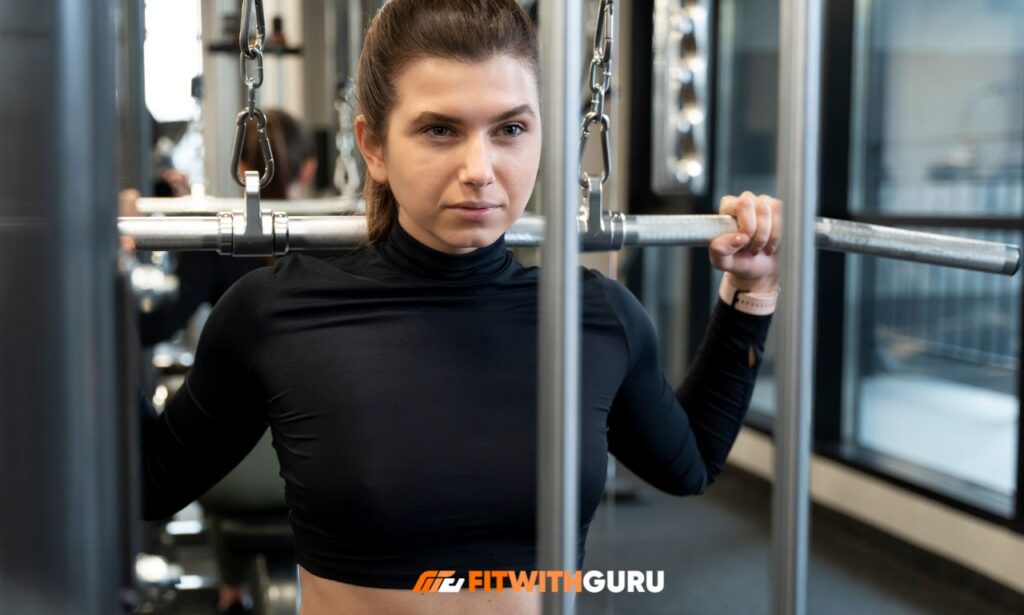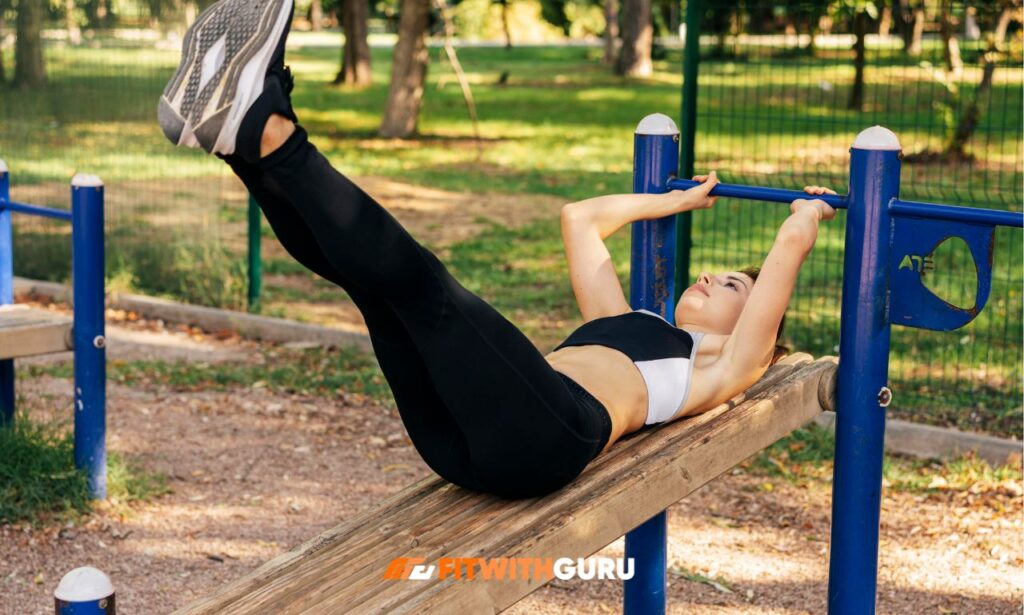Dip bar workout routines have transformed countless fitness journeys, transforming complete beginners into strength warriors who can confidently command their own bodyweight.
Whether you’ve just purchased your first set of parallel bars or are eyeing the equipment at your local park, understanding how to use these powerful tools properly can unlock a whole new level of fitness potential.
The beauty of dip bar exercises lies in their simplicity—two parallel bars and your bodyweight are all you need to build serious upper body strength and create a foundation for advanced calisthenics movements.
What Makes Dip Bars Essential for Beginners
These humble pieces of equipment offer something that machines struggle to match: the ability to move your body through space naturally while engaging multiple muscle groups simultaneously.
When you perform a dip bar workout for beginners, you’re not just working your chest or triceps in isolation—you’re teaching your body to function as a coordinated unit, building real-world strength that translates to everyday movements.
Dip bars also provide instant feedback about your actual strength levels, giving you clear benchmarks for progress and honest indicators of improvement.
Understanding Proper Form and Safety
Safety should always be the top priority when starting any calisthenics bar workout for beginners.
Always warm up thoroughly with arm circles, shoulder rotations, and light cardio to increase blood flow before attempting any dip bar movements.
Start with your grip shoulder-width apart unless an exercise specifically calls for a different width, and maintain a neutral spine throughout each movement.
If you experience sharp pain, stop immediately and reassess your form or consider regressing to an easier variation.
Top 8 Dip Bar Exercises to Build Your Strength Foundation
1. Supported Hold Position
The supported hold is the cornerstone of all calisthenics bar exercises.

How to perform:
- Position yourself between the bars with arms fully extended
- Lock your shoulders down and away from your ears
- Support your entire bodyweight with chest proud
- Keep core engaged throughout the hold
- Hold for 20-30 seconds per set
- Complete 3 sets total
This static hold teaches your body to maintain proper shoulder positioning while building the foundational strength needed for dynamic movements.
2. Assisted Dips with Resistance Band
Resistance band-assisted dips bridge the gap between supported holds and full bodyweight dips.
How to perform:
- Loop a strong resistance band around both bars
- Place your knees or feet in the band
- Lower yourself until your elbows reach 90 degrees
- Maintain control throughout the descent
- Press back up to the starting position
- Perform 3 sets of 5-8 repetitions
This dip bar exercise variation enables you to practice proper movement patterns while building the specific strength required for unassisted dips.
3. Negative Dips (Eccentric Training)
Negative dips leverage your body’s natural ability to control more weight during the lowering phase.
How to perform:
- Start at the top position with arms fully extended
- Slowly lower yourself over 3-5 seconds
- Stop when arms reach 90 degrees or slightly below
- Use a step or bench to return to the starting position
- Perform 3-4 sets of 3-5 negative repetitions
- Add one second to the lowering time each week
This eccentric-focused approach builds tremendous strength in muscles and connective tissues involved in dipping movements.
4. Straight Bar Dips
Straight bar dips offer an excellent alternative if parallel bars feel too challenging initially.
How to perform:
- Grip a single straight bar with hands shoulder-width apart
- Lift yourself with your body slightly forward
- Perform dips while maintaining a forward lean
- Complete 3 sets of 5-10 repetitions
- Focus on controlled movement throughout
This variation shifts emphasis to your chest while reducing the overall range of motion compared to parallel bar dips.
5. L-Sit Hold Progression
The L-sit transforms dip bars into an incredible core-strengthening tool.
How to perform:
- Support yourself on bars with arms extended
- Lift knees toward your chest (tucked position)
- Hold for 10-20 seconds initially
- Progress to legs at a 45-degree angle as you strengthen
- Eventually, work toward a full L-sit with legs parallel to the ground
- Complete 3 sets of maximum hold time
This dip bar workout challenges your entire anterior chain, building core strength that supports virtually every other exercise.
6. Knee Raises
Knee raises add dynamic core work to your dip bar training arsenal.
How to perform:
- Start from a supported hold position
- Engage core and raise knees toward chest
- Pause briefly at the top
- Lower back down with control
- Avoid swinging or using momentum
- Perform 3 sets of 8-12 controlled repetitions
This exercise builds a foundation for advanced hanging leg raises while strengthening hip flexors and lower abdominals.
7. Dip Bar Push-Ups
Dip bar push-ups elevate traditional push-ups both literally and figuratively.
How to perform:
- Place hands on bars in push-up position
- Keep feet on the ground with the body straight
- Lower chest below hand level
- Push back up to the starting position
- Maintain a straight line from head to heels
- Complete 3 sets of 10-15 repetitions
The expanded range of motion creates greater muscle activation than floor push-ups while recruiting additional stabilizing muscles.
8. Australian Rows (Inverted Rows)
Australian rows balance all the pressing work from dips and push-ups.

How to perform:
- Set bars at waist height with an overhand grip
- Walk feet forward until the body is at an angle
- Pull the chest toward the bars
- Squeeze shoulder blades together at the top
- Lower with control
- Aim for 3 sets of 8-12 repetitions
This horizontal pulling movement prevents muscle imbalances and promotes shoulder health.
Creating Your Beginner Dip Bar Workout Routine
Here’s how to organize these movements across your weekly training schedule:
| Day | Focus | Exercises | Sets × Reps |
| Monday | Pushing Strength | Assisted Dips, Dip Bar Push-Ups, Supported Hold | 3×8, 3×12, 3×30s |
| Wednesday | Core & Stability | L-Sit Progression, Knee Raises, Supported Hold | 3×20s, 3×10, 3×45s |
| Friday | Full Body | Negative Dips, Australian Rows, Straight Bar Dips | 4×5, 3×10, 3×8 |
Rest for at least 48 hours between sessions targeting the same muscle groups to allow adequate recovery.
Common Mistakes Beginners Must Avoid
The most frequent error in dip bar workout training is rushing into exercises before building adequate foundational strength.
Start with supported holds and assisted variations, even if they feel too easy—building a proper foundation prevents injuries and accelerates long-term progress.
Always maintain active shoulders by gently pressing them down and back, creating a stable platform for movement.
Spend at least 5-10 minutes warming up before training and dedicate time to gentle stretching afterward to maintain flexibility and promote recovery.
People Also Ask
How long does it take to do a full dip as a beginner?
Most beginners can achieve their first unassisted dip within 4-8 weeks of consistent training, although this timeline varies depending on their starting strength levels and body composition.
Focus on the journey rather than arbitrary timelines—when your first clean dip happens, it will feel advantageous.
Can I do a dip bar workout every day?
Training dip bar exercises daily isn’t recommended for beginners due to the significant stress these movements place on your muscles and joints.
Your body needs 48-72 hours to recover between intense upper body sessions, making 3-4 sessions per week optimal.
Overtraining leads to plateaus, increased injury risk, and burnout—more innovative training is often more effective than simply working harder.
What muscles do dip bar workouts target?
Calisthenics bar workout for beginners programs primarily target your chest, shoulders, and triceps, with secondary engagement of your core, back, and grip strength.
Supporting exercises like L-sits and knee raises directly target abdominal muscles and hip flexors, while Australian rows engage your back muscles.
This comprehensive muscle recruitment makes dip bar training incredibly efficient for total upper body development.
Do I need other equipment besides dip bars?
While dip bars alone provide an excellent foundation, adding resistance bands enables assisted variations that bridge strength gaps.
A pull-up bar complements pushing movements with essential pulling exercises.
However, you can build impressive strength using only dip bars for your first several months of training before investing in additional equipment.
How do I prevent shoulder pain during dip bar exercises?
Shoulder discomfort during the dip bar workout typically stems from poor positioning or progressing too quickly.
Always maintain active shoulders by keeping them depressed and slightly retracted, never allowing them to hunch toward your ears.
Limit your range of motion initially, stopping at 90 degrees of elbow flexion to prevent unnecessary shoulder strain.
If you experience persistent pain, consider reducing its intensity and consulting a healthcare professional.
Conclusion
Mastering dip bar workout movements opens up an entire world of bodyweight strength training that requires minimal equipment while delivering maximum results.
The eight exercises covered in this guide provide a comprehensive foundation that beginners can use to build impressive upper-body strength and prepare for advanced calisthenics movements.
Remember that consistency trumps intensity—three focused sessions per week, following proper progression principles, will yield far better results than sporadic, intense workouts.
Track your progress, celebrate small victories, and trust the process as your body adapts and grows stronger.
Your stronger, more capable self is waiting on the other side of consistent action—grab those bars and begin building it today.
